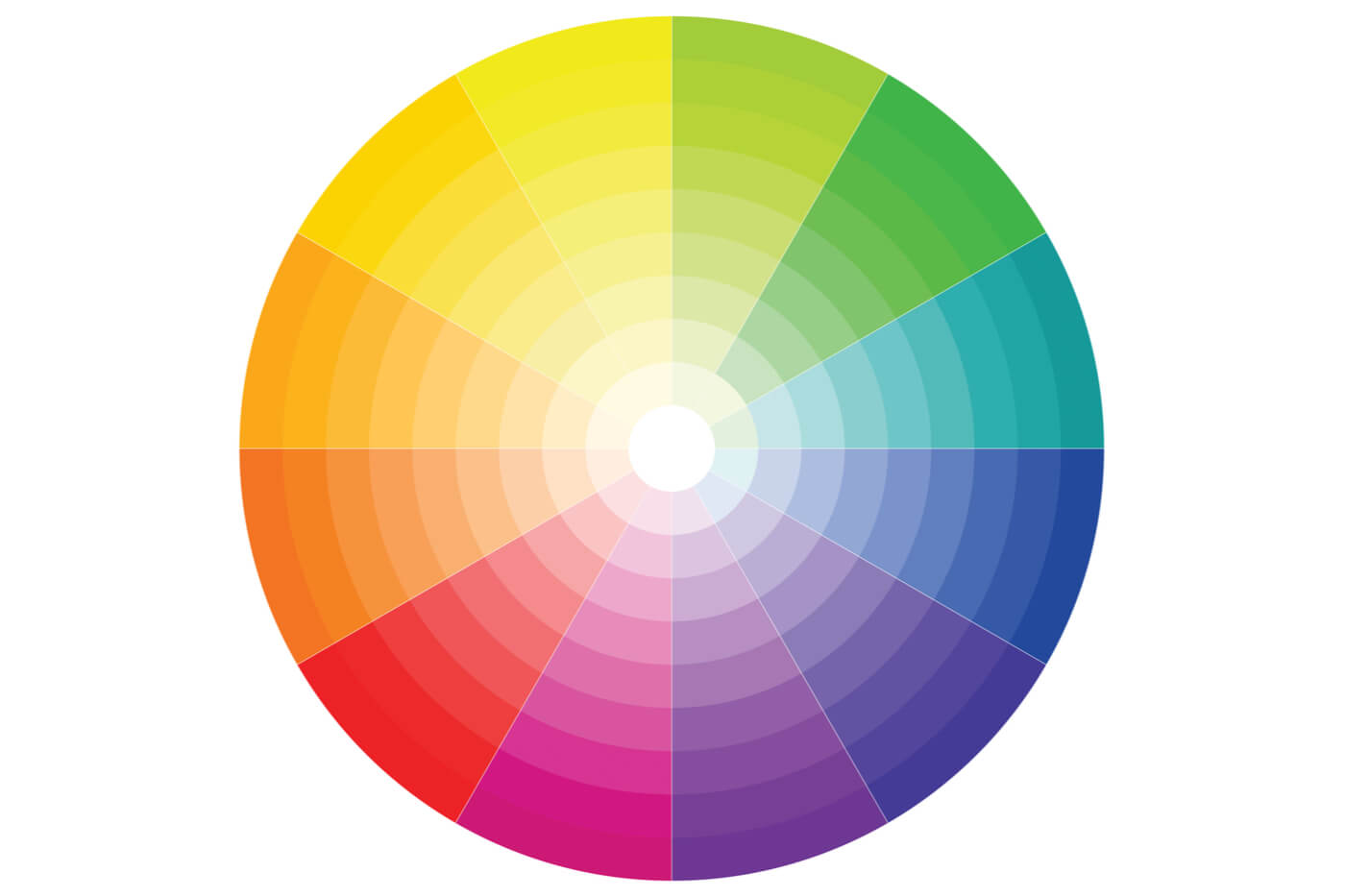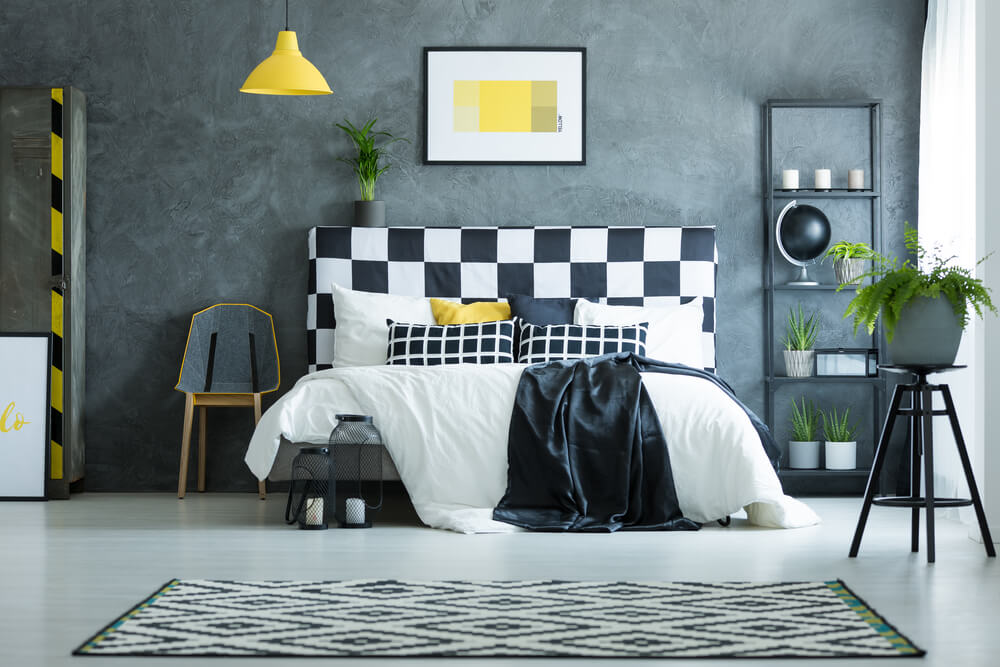Decor Lessons: Combining Colors

If you have doubts about correctly combining colors in your decor, you’ll love this article! We’re going to explain the colors that combine the best and how you can apply them in your home.
Beyond the common combinations you already know by heart, we’ll propose some infallible formulas. By discovering what these are, you can take more risks, in a safer and more calculated way.
Ready? Please keep reading to discover our color crash course on how to use color to your advantage.
Combining colors that match

In order for you to know the best shades to use in your home, you need to understand some basic principles of color theory. Grab a pencil and paper because the lesson is about to begin!
Numbers don’t lie
Most designers use the 60-30-10 rule when it comes to decorating. They choose a dominant or main color to cover 60 percent of the space, a secondary one to occupy 30 percent, and a third color to take care of the remaining ten percent. Playing with just three colors means you can create a stunning room. Of course, you do need to know which colors complement one another.
Learn about the color wheel
Look for a color wheel on the internet and keep it in mind when decorating your home. It’ll give you a lot of play when it comes to combining colors. The only other thing you need to know is these three tricks:
- Complementary colors: colors that are opposite each other on the color wheel. By using these, you’ll create contrast, but without being too strident.
- Consecutive colors: a harmonious mix consisting of combining colors that follow one another on the color wheel.
- Monocolor combination: if you like a classic style, this option is for you. It’s about choosing a color and playing with the intensity. This presents the least risky option.
Combining colors: the colors that go best together are opposites

Opposites attract! Think black and white. This happens with light and dark shades of the same color as well or with those facing each other on the color wheel. This means that if green is on one side of the color wheel and pink is on the other, you have a winning combination.
The placidity of neutral colors
We’ve already explained how popular neutral colors are in decor. They fit great with each other and result in a relaxing atmosphere. They’re a perfect base to add accessories, textures, and different materials.
You can combine them with each other too and tones such as white and beige, work very well. Try using different shades of the same color and play with the intensity through your accessories.
The best-combining colors according to your space
Before choosing colors, look at the space you want to decorate. It’s important for you to consider the amount of natural light the room receives. Assess whether it’s a warm or cold space and think about the purpose of the room.
By doing this, if your room is dark, you can give weight to the light tones. Figure out if the color is cold or warm and assess whether you need to simply refresh the space or make it more welcoming.
Create visual spaces
Using color well will help you when creating certain visual effects. You can delimit an area, by painting it in a contrasting color. This also allows you to camouflage a column or pipe for example, by painting it the same color as the wall.
You can always change the perception of a room too and make it appear narrower, wider, or higher. For example, if you paint the wall at the end of a long hallway in a more intense color, you can visually shorten it.
Now that you have an idea of which colors go best together and how you can create interesting combinations, you’ll see how your home can become more elegant and cohesive.
If you have doubts about correctly combining colors in your decor, you’ll love this article! We’re going to explain the colors that combine the best and how you can apply them in your home.
Beyond the common combinations you already know by heart, we’ll propose some infallible formulas. By discovering what these are, you can take more risks, in a safer and more calculated way.
Ready? Please keep reading to discover our color crash course on how to use color to your advantage.
Combining colors that match

In order for you to know the best shades to use in your home, you need to understand some basic principles of color theory. Grab a pencil and paper because the lesson is about to begin!
Numbers don’t lie
Most designers use the 60-30-10 rule when it comes to decorating. They choose a dominant or main color to cover 60 percent of the space, a secondary one to occupy 30 percent, and a third color to take care of the remaining ten percent. Playing with just three colors means you can create a stunning room. Of course, you do need to know which colors complement one another.
Learn about the color wheel
Look for a color wheel on the internet and keep it in mind when decorating your home. It’ll give you a lot of play when it comes to combining colors. The only other thing you need to know is these three tricks:
- Complementary colors: colors that are opposite each other on the color wheel. By using these, you’ll create contrast, but without being too strident.
- Consecutive colors: a harmonious mix consisting of combining colors that follow one another on the color wheel.
- Monocolor combination: if you like a classic style, this option is for you. It’s about choosing a color and playing with the intensity. This presents the least risky option.
Combining colors: the colors that go best together are opposites

Opposites attract! Think black and white. This happens with light and dark shades of the same color as well or with those facing each other on the color wheel. This means that if green is on one side of the color wheel and pink is on the other, you have a winning combination.
The placidity of neutral colors
We’ve already explained how popular neutral colors are in decor. They fit great with each other and result in a relaxing atmosphere. They’re a perfect base to add accessories, textures, and different materials.
You can combine them with each other too and tones such as white and beige, work very well. Try using different shades of the same color and play with the intensity through your accessories.
The best-combining colors according to your space
Before choosing colors, look at the space you want to decorate. It’s important for you to consider the amount of natural light the room receives. Assess whether it’s a warm or cold space and think about the purpose of the room.
By doing this, if your room is dark, you can give weight to the light tones. Figure out if the color is cold or warm and assess whether you need to simply refresh the space or make it more welcoming.
Create visual spaces
Using color well will help you when creating certain visual effects. You can delimit an area, by painting it in a contrasting color. This also allows you to camouflage a column or pipe for example, by painting it the same color as the wall.
You can always change the perception of a room too and make it appear narrower, wider, or higher. For example, if you paint the wall at the end of a long hallway in a more intense color, you can visually shorten it.
Now that you have an idea of which colors go best together and how you can create interesting combinations, you’ll see how your home can become more elegant and cohesive.







